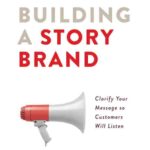When I talk to small business owners about making smarter business investments, I often stress the importance of testing leap-of-faith assumptions early. These are the foundational beliefs entrepreneurs stake their business on—beliefs about customer behavior, pricing strategies, or even whether a product solves a real problem. If those assumptions turn out to be wrong, entire businesses can implode before they even get off the ground.
When I share this with others, I often hear the same frustrated retort: “That sounds like something the government should be doing too—especially with how much of our money they spend without testing first.” I agree.
Take the Affordable Care Act (ACA), more commonly known as Obamacare. At its core, the law was built on a major leap of faith assumption: if we provide low-income Americans with affordable or subsidized health insurance, they’ll stop using the emergency room as their go-to for primary care. Instead, the theory went, they’d see regular doctors during office hours for things like colds, viruses, or minor injuries—ultimately reducing the overall cost of care.
In theory, it made sense. Emergency room care is wildly expensive, and if uninsured people swapped it out for less costly doctor visits, savings would pile up. But here’s the problem: the assumption was never validated before the policy was rolled out at scale.
A randomized control study out of Oregon—one that was available before full-scale ACA implementation—should have been a red flag. The study revealed that providing Medicaid coverage to low-income adults actually increased emergency room visits by a whopping 40%.
Rather than booking doctor appointments for minor ailments, many newly insured patients continued to use emergency rooms for non-emergency care. Why? Several reasons emerged: long waits to see primary care providers, unfamiliarity with how to navigate the healthcare system, and even the perception that ER care is more comprehensive or convenient. And for those on high-deductible plans, even with coverage, out-of-pocket costs remained a deterrent to primary care usage.
A well-run for-profit business would look at data like that and immediately reconsider the plan. If your foundational belief proves false in the testing phase, the logical next move is to either abandon the plan or pivot.
But governments don’t always operate that way. They often skip the testing phase and instead go all-in, using billions in taxpayer dollars based on untested assumptions. The result? Programs that may sound good politically, falter in practice—wasting money and failing to solve the original problem.
The lesson for entrepreneurs is crystal clear: don’t scale before you test.
Let’s look at what this means for your business. If you believe your target audience will pay $50/month for a new subscription service, test it before building the full platform. Use a landing page, a small pilot, or even one-on-one interviews to validate the assumption.
Related Post: Testing the Market with a 3-Page Website
Thinking of launching a new product line based on a hunch? Start with a Minimum Viable Product (MVP) or a Minimum Marketable Product (MMP). See how people react, buy, or walk away. If you’re wrong, you’ll learn fast—and you’ll save yourself a mountain of money, stress, and time.
Here’s the thing: every business owner makes assumptions. The successful ones treat those assumptions like hypotheses, not facts.
This is the heart of the Lean Startup methodology, popularized by Eric Ries, which encourages businesses to “build-measure-learn” in rapid cycles. Test early, test often, and let your next decision be shaped by real-world feedback, not wishful thinking.
Related Post: Lean Startup – What You Need to Know
Sadly, we can’t force governments to operate this way. But you can run your business this way—and come out ahead because of it.
Do you test your leap of faith assumptions before investing valuable time and money?












